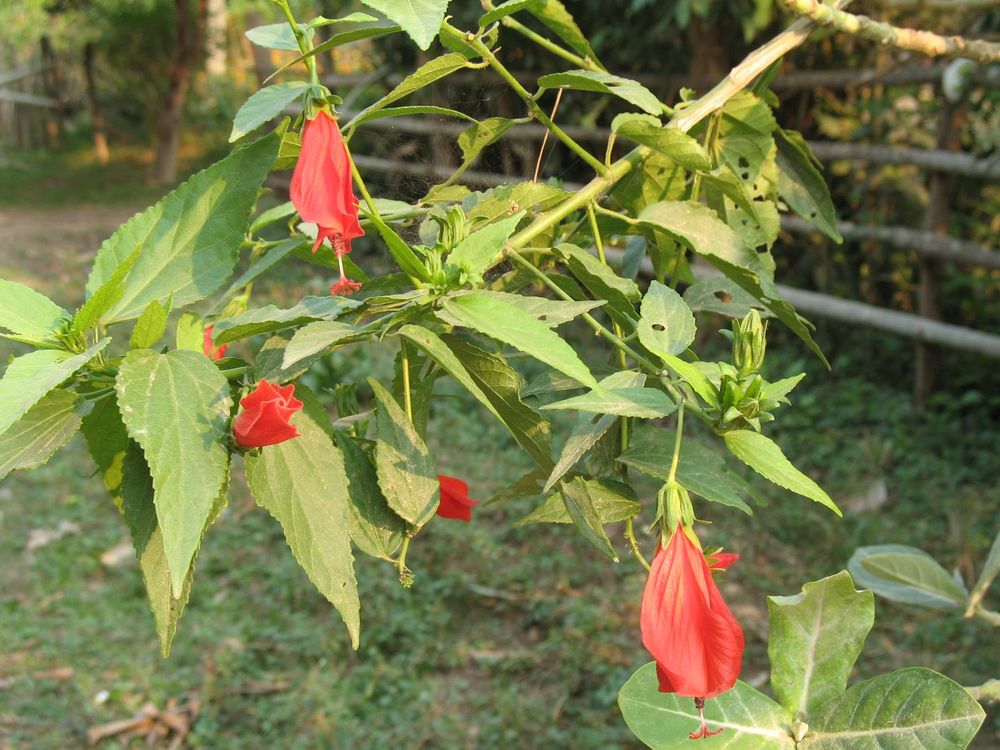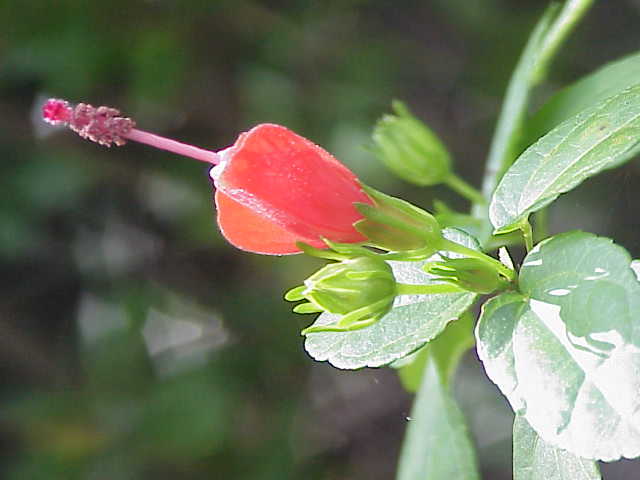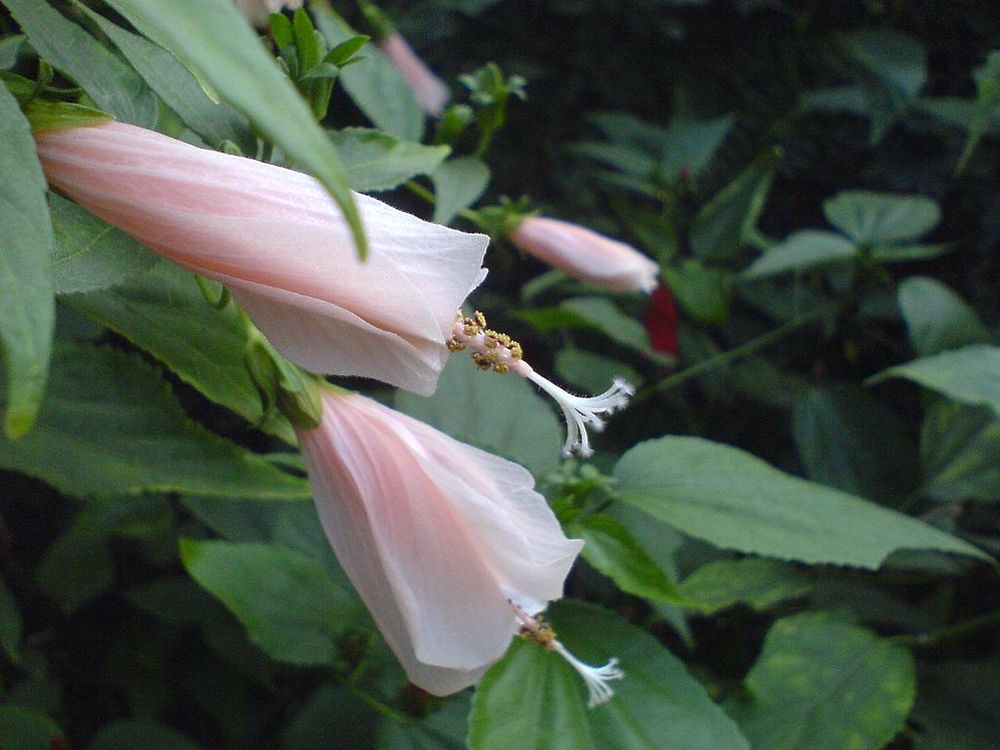The characteristic of this hibiscus whose flowers never open has led to its name in most languages: hibiscus piment, “sleeping hibiscus”, and in Lao “cone-shaped hibiscus”. The Lao people use this flower according to its morphology to make sò dok may, chopsticks on which flowers are threaded to decorate the soukhouane wedding platters. Indeed this hibiscus, red most of the time, cannot be suitable for the pagoda, whereas for a wedding its color will symbolize passion.
In the past, women used to wash their hair with the leaves of this hibiscus crushed in water.
La caractéristique de cet hibiscus dont les fleurs ne s’ouvrent jamais a induit son nom dans la plupart des langues: hibiscus piment, « hibiscus dormant », et en lao «hibiscus en forme de cône ». Les Lao utilisent justement cette fleur en fonction de sa morphologie pour confectionner des sò dok may, baguettes sur lesquelles sont enfilées des fleurs qui orneront les plateaux de soukhouane de mariage. En effet, cet hibiscus, rouge la plupart du temps, ne peut convenir pour la pagode, alors que pour un mariage sa couleur symbolisera la passion.
Autrefois les femmes se lavaient les cheveux avec les feuilles de cet hibiscus écrasées dans l’eau.



The characteristic of this hibiscus whose flowers never open has led to its name in most languages: hibiscus piment, “sleeping hibiscus”, and in Lao “cone-shaped hibiscus”. The Lao people use this flower according to its morphology to make sò dok may, chopsticks on which flowers are threaded to decorate the soukhouane wedding platters. Indeed this hibiscus, red most of the time, cannot be suitable for the pagoda, whereas for a wedding its color will symbolize passion.
In the past, women used to wash their hair with the leaves of this hibiscus crushed in water.
La caractéristique de cet hibiscus dont les fleurs ne s’ouvrent jamais a induit son nom dans la plupart des langues: hibiscus piment, « hibiscus dormant », et en lao «hibiscus en forme de cône ». Les Lao utilisent justement cette fleur en fonction de sa morphologie pour confectionner des sò dok may, baguettes sur lesquelles sont enfilées des fleurs qui orneront les plateaux de soukhouane de mariage. En effet, cet hibiscus, rouge la plupart du temps, ne peut convenir pour la pagode, alors que pour un mariage sa couleur symbolisera la passion.
Autrefois les femmes se lavaient les cheveux avec les feuilles de cet hibiscus écrasées dans l’eau.






The characteristic of this hibiscus whose flowers never open has led to its name in most languages: hibiscus piment, “sleeping hibiscus”, and in Lao “cone-shaped hibiscus”. The Lao people use this flower according to its morphology to make sò dok may, chopsticks on which flowers are threaded to decorate the soukhouane wedding platters. Indeed this hibiscus, red most of the time, cannot be suitable for the pagoda, whereas for a wedding its color will symbolize passion.
In the past, women used to wash their hair with the leaves of this hibiscus crushed in water.
La caractéristique de cet hibiscus dont les fleurs ne s’ouvrent jamais a induit son nom dans la plupart des langues: hibiscus piment, « hibiscus dormant », et en lao «hibiscus en forme de cône ». Les Lao utilisent justement cette fleur en fonction de sa morphologie pour confectionner des sò dok may, baguettes sur lesquelles sont enfilées des fleurs qui orneront les plateaux de soukhouane de mariage. En effet, cet hibiscus, rouge la plupart du temps, ne peut convenir pour la pagode, alors que pour un mariage sa couleur symbolisera la passion.
Autrefois les femmes se lavaient les cheveux avec les feuilles de cet hibiscus écrasées dans l’eau.


